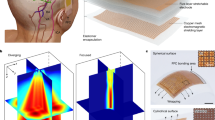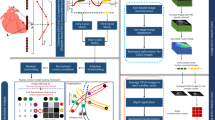Abstract
Duplex Doppler ultrasonography (DDU) and dynamic infusion pharmacocavernosometry are the conventional diagnostic methods currently used to assess veno-occlusive hemodynamic status of patients with erectile dysfunction (ED). Dynamic infusion pharmacocavernosography is the standard method for demonstrating and visualization of venous leakage. To assess the potential application and utility of magnetic resonance imaging (MRI) in demonstrating and visualizing veno-occlusive dysfunction in patients with ED. A total of 28 patients, (32–56 years of age; mean 43.4±7.2 years), with clinical symptoms of veno-occlusive ED participated in this study. All patients have undergone DDU and dynamic infusion pharmacocavernosometry and pharmacocavernosography to assess presence of venous leakage. Patients were then evaluated with MRI and enhancement by intracavernous injection of paramagnetic contrast agent and erection was induced by intracavernosal injection of pharmacological agents. Diagnosis of ED patients with venous leakage was confirmed in all 28 patients using DDU and dynamic infusion cavernosometry-cavernosography (DICC). Venous leakage was documented by conventional DICC in 21 of 28 patients (75%). Veno-occlusive dysfunction in all patients was also assessed by MRI to localize distal, proximal or mixed locations of draining veins from the corpora cavernosa. MRI visualized venous leakage patients, in which DICC did not confirm venous leakage. MRI may be a useful diagnostic tool for assessing veno-occlusive dysfunction in ED patients and may improve diagnosis of venous leakage visualization.
This is a preview of subscription content, access via your institution
Access options
Subscribe to this journal
Receive 8 print issues and online access
$259.00 per year
only $32.38 per issue
Buy this article
- Purchase on Springer Link
- Instant access to full article PDF
Prices may be subject to local taxes which are calculated during checkout









Similar content being viewed by others
References
Feldman HA, Goldstein I, Hatzichristou DG, Krane RJ, McKinlay JB . Impotence and its medical and psychosocial correlates: results of the Massachusetts male aging study. J Urol 1994; 151: 54–61.
Porst H . Penile disorders. Proceedings of the International Symposium on Penile Disorders. Springer: Hamburg, Germany, 1996, 1997, pp 1–241.
Wespes E, Amar E, Hatzichristou D, Hatzimouratidis K, Montorsi F, Pryor J et al. EAU guidelines on erectile dysfunction: an update. Eur Urol 2006; 49: 806–815.
Lue TF, Tanagho EA . Physiology of erection and pharmacological management of impotence. J Urol 1987; 137: 829–836.
Monga M . The aging penis: erectile dysfunction. Geriatr Nephrol Urol 1999; 9: 27–37.
Traish AM, Guay AT . Are androgens critical for penile erections in humans? Examining the clinical and preclinical evidence. J Sex Med 2006; 3: 382–407.
Padma-Nathan H, Kelly L, Boyd SD . Ultrastructural evidence, in a population of potent men, for corporal smooth muscle myopathy as an inherent process of aging. J Urol 1993; 286: 149–150.
Meuleman EJ . Colour Doppler Ultrasonography in the Work-Up of Erectile Dysfunction/Second ESUI Meeting. Video Imagine in Uro-Andrology: Madrid, 2003.
Aversa A, Bruzziches R, Spera G . Diagnosing erectile dysfunction: the penile dynamic colour duplex ultrasound revisited. Int J Androl 2005; 28 (Suppl 2): 61–63.
Shamloul R . Peak systolic velocities may be falsely low in young patients with erectile dysfunction. J Sex Med 2006; 3: 138–143.
Mazo EB, Dmitriev DG, Gamidov SI, Shariia MA . MRI of penis and pelvic floor in examination of erectile dysfunction pathogenesis in patients after perineal blunt injury and choice of treatment policy. Urologiia 2000; 6: 24–28.
Stehling MK, Liu L, Laub G, Fleischmann K, Rohde U . Gadolinium-enhanced magnetic resonance angiography of the pelvis in patients with erectile impotence. MAGMA 1997; 5: 247–254.
Hricak H, Marotti M, Gilbert TJ, Lue TF, Wetzel LH, McAninch JW et al. Normal penile anatomy and abnormal penile conditions: evaluation with MR imaging. Radiology 1988D; 169: 683–690.
Vosshenrich R, Schroeder-Printzen I, Weidner W, Fischer U, Funke M, Ringert RH . Value of magnetic resonance imaging in patients with penile induration (Peyronie's disease). J Urol 1995; 153: 1122–1125.
Lewis RW . Venous surgery for impotence. Urol Clin North Am 1988; 15: 115–121.
Freedman AL, Costa Neto F, Mehringer CM, Rajfer J . Long-term results of penile vein ligation for impotence from venous leakage. J Urol 1993; 149: 1301–1303.
Peþkircio∂lu L, Tekin I, Boyvat F, Karabulut A, Ozkarde° H . Embolization of the deep dorsal vein for the treatment of erectile impotence due to veno-occlusive dysfunction. J Urol 2000; 163: 472–475.
Hsu GL, Hsieh CH, Wen HS, Kang TJ, Chiang HS . Penile venous anatomy: application to surgery for erectile disturbance. Asian J Androl 2002; 4: 61–66.
Acknowledgements
The authors declare no source of funding. We are indebted to Professor Abdulmaged Traish, Boston University School of Medicine for his critical reading and editing of this manuscript.
Author information
Authors and Affiliations
Corresponding author
Rights and permissions
About this article
Cite this article
Kurbatov, D., Kuznetsky, Y., Kitaev, S. et al. Magnetic resonance imaging as a potential tool for objective visualization of venous leakage in patients with veno-occlusive erectile dysfunction. Int J Impot Res 20, 192–198 (2008). https://doi.org/10.1038/sj.ijir.3901607
Received:
Revised:
Accepted:
Published:
Issue Date:
DOI: https://doi.org/10.1038/sj.ijir.3901607



